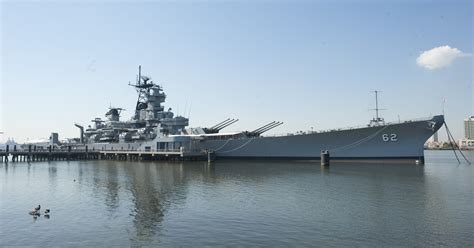USS Texas: A Century-Old Battleship Transformed Into a Museum of Maritime Might

by Emma Taylor
When the USS Texas was launched in 1912, it heralded a new era of naval warfare as one of the world’s most powerful dreadnought battleships. With its imposing fourteen-inch guns and torpedo blisters, it was a floating fortress, the Death Star of its day, patrolling seas and engaging in pivotal battles across two World Wars. The storied vessel has now undergone a dramatic makeover, as it was hoisted into dry dock at Galveston’s Gulf Copper shipyard on August 31, 2022, to preserve it as a naval museum exhibit.
The Texas, a ship that evokes the spirit of early 20th-century naval power, saw action from the North Sea during World War I to the shores of Normandy and the Pacific theaters in World War II. Ernest Hemingway, no stranger to war’s ferocity, once described the ship’s artillery support at Normandy: “There would be a flash like a blast furnace from the 14-inch guns of Texas…Then the yellow-brown smoke would cloud out and, with the smoke still rolling, the concussion and the report would hit us, jarring the men’s helmets.”
The vessel’s post-war fate could have been similar to many of her contemporaries: the scrapyard or target practice. However, Texas congressmen, including Lyndon B. Johnson, saw a different destiny for her. Their vision and the collective efforts of Texans turned the battleship into the nation’s first permanent floating museum, docked beside the San Jacinto Monument in 1948. Over the years, Texas has drawn countless visitors, with “Remember the Texas” campaigns rallying support for her upkeep.
The hull, however, kept deteriorating. In 2017, a breach fifteen feet beneath the waterline led to a six-degree tilt of the ship. It became evident that Texas required relocation to a dry dock for a significant refurbishment. The state contributed $35 million, and by 2020, the foundation assumed responsibility from TPWD to oversee the much-needed renovation.
It was brought to dry dock at the Gulf Copper shipyard. Many of the repairs were done below the waterline, such as filling small holes, reinforcing steel in specific areas, and replacing the torpedo blisters. The majority of the guns, except the largest ones, were transported to a warehouse for upkeep and cleaning. The Texas is expected to stay in dry dock until at least late February 2024. After that, it will be put back into the water, allowing workers to paint the superstructure, change the deck, and reattach the guns.
For now, the Texas, a living relic of a bygone era, stands testament to the technological advances and valor that shaped 20th-century conflicts. With the vessel expected to return to the water and reopen to the public by late 2025, the preservation of the USS Texas ensures that future generations can appreciate the might and history of one of America’s most formidable battleships.
